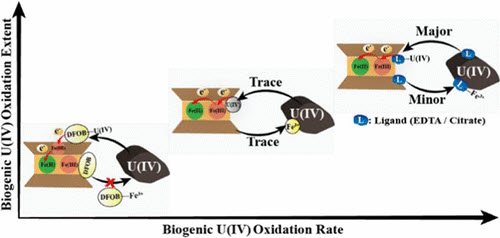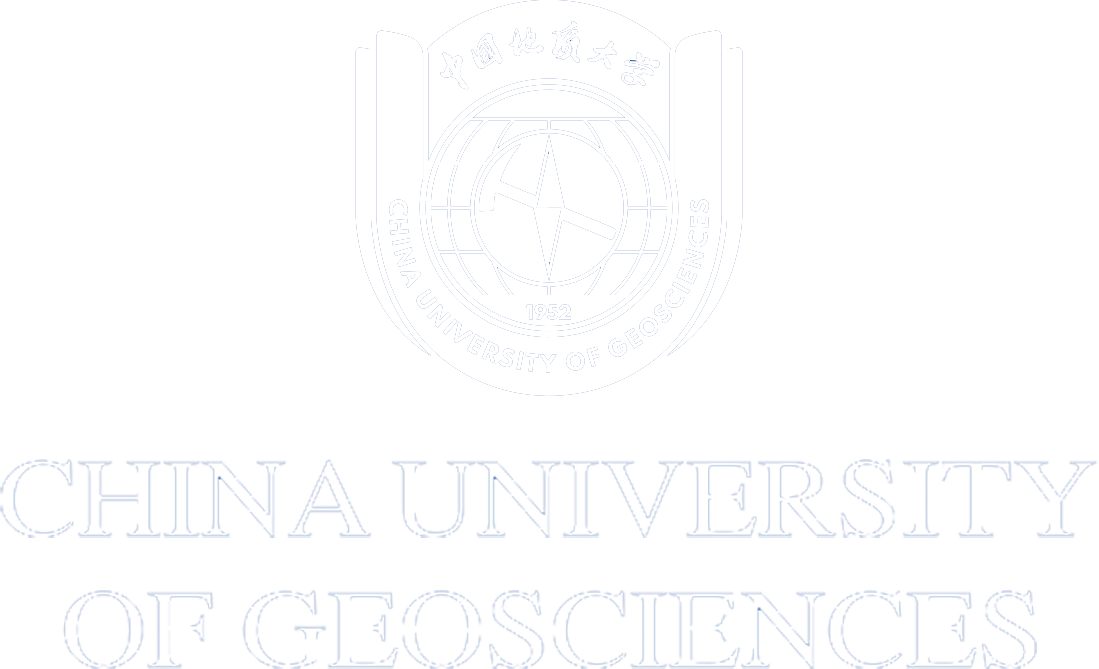Bioreduction of soluble U(VI) to sparingly soluble U(IV) solids was proposed as a remediation method for uranium contamination. Therefore, the stability and longevity of biogenic U(IV) are critical to the success of uranium remediation. However, co-occurrence of clay minerals and organic ligands could potentially reoxidize U(IV) to U(VI). Herein, we report a combined effect of Fe(III)-rich nontronite (NAu-2) and environmentally prevalent organic ligands on reoxidation of biogenic U(IV) at circumneutral pH. After 30 days of incubation, structural Fe(III) in NAu-2 oxidized 45.50% U(IV) with an initial rate of 2.7 × 10–3 mol m–2 d–1. Addition of citrate and ethylenediaminetetraacetic acid (EDTA) greatly promoted the oxidative dissolution of U(IV) by structural Fe(III) in NAu-2, primarily through the formation of aqueous ligand-U(IV) complexes. In contrast, a model siderophore, desferrioxamine B (DFOB), partially inhibited U(IV) oxidation due to the formation of stable DFOB-Fe3+ complexes. The resulting U(VI) species intercalated into an NAu-2 interlayer or adsorbed onto an NAu-2 surface. Our results highlight the importance of organic ligands in oxidative dissolution of U(IV) minerals by Fe(III)-bearing clay minerals and have important implications for the design of nuclear waste storage and remediation strategies, especially in clay- and organic-rich environments.

Article link: https://doi.org/10.1021/acs.est.1c04946





 Address
Address
 E-Mail
E-Mail
 Telephone
Telephone